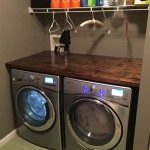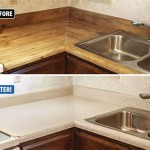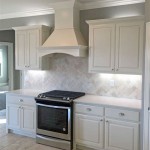Pour In Place Concrete Countertop
Concrete countertops are a popular choice for kitchens and bathrooms because they are durable, easy to clean, and can be customized to any shape or size. Pour-in-place concrete countertops are made by pouring a concrete mixture into a mold and then finishing the surface. This method is less expensive than precast concrete countertops, and it allows for more design flexibility.
Materials and Equipment
To make a pour-in-place concrete countertop, you will need the following materials and equipment:
- Concrete mix
- Water
- Mold
- Trowel
- Edger
- Sealer
Instructions
To make a pour-in-place concrete countertop, follow these instructions:
- Prepare the mold by cleaning it and applying a release agent. A release agent is a material that helps prevent the concrete from sticking to the mold.
- Mix the concrete according to the manufacturer's instructions. The concrete should be mixed until it has a consistency similar to pancake batter.
- Pour the concrete into the mold. Fill the mold to the top and then smooth the surface with a trowel.
- Allow the concrete to cure for 24 hours. During this time, the concrete will harden and gain strength.
- Remove the concrete from the mold and finish the surface as desired. You can finish the surface with a trowel, edger, or other tools.
- Seal the countertop to protect it from stains and moisture. A sealer is a material that creates a barrier between the concrete and the environment.
Tips
Here are a few tips for making a pour-in-place concrete countertop:
- Use a high-quality concrete mix. The quality of the concrete will affect the durability and appearance of the countertop.
- Mix the concrete according to the manufacturer's instructions. Do not add too much or too little water, as this will affect the strength of the concrete.
- Pour the concrete into the mold slowly and evenly. This will help prevent air bubbles from forming in the concrete.
- Allow the concrete to cure for the full 24 hours before removing it from the mold. This will give the concrete time to gain strength.
- Finish the surface of the concrete as desired. You can use a trowel, edger, or other tools to create the desired look.
- Seal the countertop to protect it from stains and moisture. A sealer is a material that creates a barrier between the concrete and the environment.
Troubleshooting
If you are having problems making a pour-in-place concrete countertop, here are a few troubleshooting tips:
- The concrete is too wet. Add more dry concrete mix until the concrete reaches the proper consistency.
- The concrete is too dry. Add more water until the concrete reaches the proper consistency.
- There are air bubbles in the concrete. Tap the mold gently to release any air bubbles.
- The concrete is not curing properly. Make sure that the concrete is in a warm, humid environment while it is curing.
- The countertop is not finished properly. Use a trowel, edger, or other tools to finish the surface of the concrete as desired.

Pour In Place Concrete Countertop Pouring Step 4 1 Exchange

How To Make Diy Cast In Place White Concrete Countertops Do It Yourself Fun Ideas

How To Pour Concrete Countertops In Place Outdoor Kitchen Part 6

Diy Concrete Countertops Part I Setting The Forms Wildfire Interiors

Pour In Place Concrete Countertop Pouring Step 4 3 Exchange

Pre Cast Vs In Place Concrete Countertops

Concrete Countertops How To Pour In Place Outdoor Kitchen Part 6 Youtube

A Primer On Concrete Countertops Precast Vs Pour In Place Addicted 2 Decorating

A Primer On Concrete Countertops Precast Vs Pour In Place Kitchen Poured Countertop Design

Concrete Countertops Faq Fine Homebuilding
See Also








